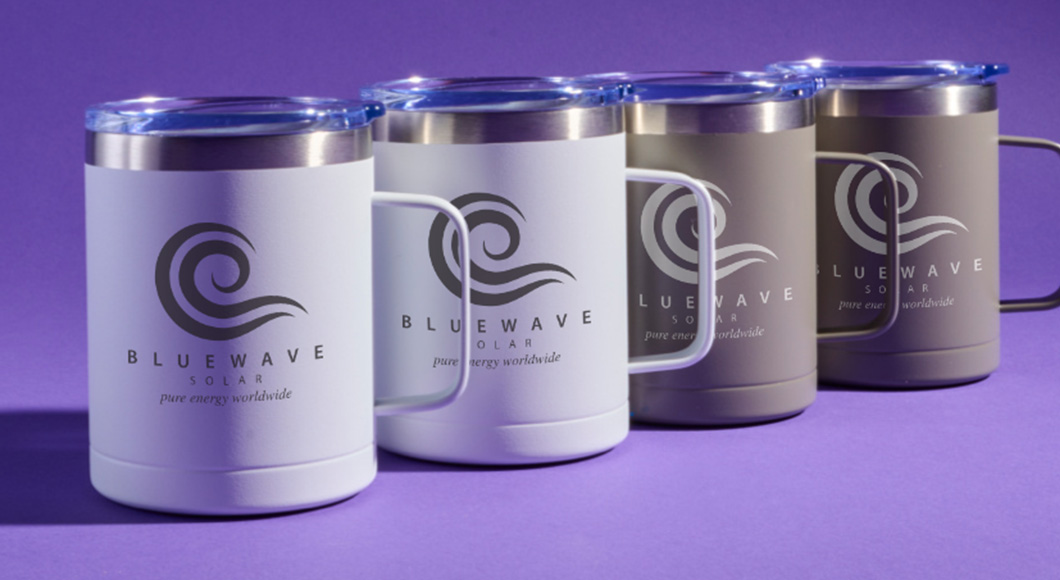
What is an imprint, you ask? It’s a mark on a surface—could be tire tracks in the snow, “will you marry me” in the sand on the beach, or your logo on a mug! There is an exception to this definition, and that applies to the question, “What is an imprint in publishing?” Read on to learn the most popular imprint options for promotional merchandise, and why “imprint” is used differently by book publishers!
For customized merchandise, your imprint is the mark that makes it your own. You pick your product, color, material, and other features. Your logo, slogan, or ad message is imprinted on the item using the method that works best with the material and style. For instance, a high-end pen intended as an employee anniversary gift might be laser engraved. A sports water bottle with a push-pull top, intended for mass distribution at a fun run, is more likely to use a silkscreen imprint method.
Following are the most popular imprint methods for promotional merchandise, including which types of products are best suited for each method:
Below we break down the most commonly used imprint methods for popular branded merchandise.
Publishing houses use the word “imprint” differently. Certainly, a book’s cover or flyleaf can be imprinted in the traditional sense, with a full color title or an embossed medallion, such as “National Book Award” winner. Book covers use foil stamping, debossing, and embossing to help book titles stand out. After all, when browsing a bookstore, we actually do indeed judge a book by its cover! But more often, the word “imprint” in publishing refers to something else.
In publishing, an imprint is a division of a larger publisher. Individual “imprints” in publishing group books together to target specific niches and demographics. For example, Penguin Random House is a massive publishing company with many smaller imprints, like Alfred A. Knopf, Penguin Classics, Everyman’s Library, and Doubleday. Imprints in publishing can be looked at like different brands owned by the same company. An imprint in publishing is a brand or niche of published books, like Harlequin is the imprint for romance novels for the publisher HarperCollins. A non-publishing example is Gap, Inc., which owns multiple brands (would be called “imprints” in publishing) serving different demographics, including Gap, Old Navy, Banana Republic, and Athleta.
In all cases, an imprint is a distinctive marking, symbol or logo. This can be your brand in marketing your business on promotional products, or a publisher’s brand in marketing a certain genre of books.
When you shop promotional products, we recommend choosing your product category first. The goal of your branded merchandise is often to show customer appreciation, retain clients, or celebrate important events. You want to pick a product that is valuable, meaningful, or useful to your recipient. From there, sort by imprint method (for Pens.com, you’ll find that option on the left-hand menu bar). You can filter to see only drinkware you can laser engrave with your logo, or only totes you can customize with your full color logo. Depending upon your brand guidelines, occasion, and budget, you can choose the perfect imprint method for every product!
Introducing “Where Success Meets Swag”—an editorial series designed to put business owners in the spotlight. Follow along for advice from…
What’s your favorite pen in your desk? For many people, Pentel® is their go-to brand, both for their style and…
There's a lot involved with running a business. You've got to manage your inventory or services, bring in customers and…
Work uniforms often get a bad rap. That’s because a lot of businesses aren’t picking the right outfits for their…
Welcome to your step-by-step guide to crafting the perfect card! The special meaning we attach to a hand-written card goes…
If you’re looking for custom apparel that feels good, looks good, and can hold up to frequent use, you might…